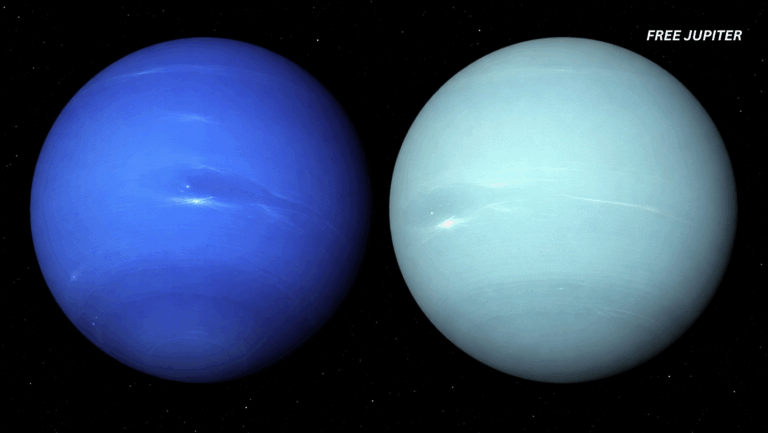Friendly Note: FreeJupiter.com shares general info for curious minds 🌟 Please fact-check all claims—and always check health matters with a professional 💙
We tend to think of clouds as soft, airy, floaty things, like nature’s pillows just hanging out up there in the sky. But here’s the wild part: one single, average-looking cumulus cloud—the kind you’d see on a lazy summer afternoon—can weigh over one million pounds. That’s about the same weight as 100 elephants, a full stadium’s worth of concert speakers, or a fully loaded Boeing 747.
Yet, despite being this massive, clouds float effortlessly above us. No groaning under their weight. No falling out of the sky. Just casually drifting along like they haven’t got a care in the world.
So what’s going on?
What’s Inside a Cloud, Anyway?
Clouds may look like whipped cream or cotton candy, but they’re actually made of tiny water droplets or ice crystals—millions to billions of them—all condensed around microscopic bits of dust, pollen, or sea salt. Each of these droplets is incredibly light on its own, but when you gather billions of them together? That’s when things start to get seriously heavy.
To put it in numbers: a typical cumulus cloud contains around 500,000 kilograms (or 1.1 million pounds) of water in just one cubic kilometer of space.
That’s a floating body of water the size of a small lake—hovering right above your head.
Why Clouds Don’t Just Crash Down on Us
Here’s the fascinating part: clouds float because of the air around them.
Even though they’re heavy, they’re spread out across a large area in the atmosphere. The water droplets are so tiny that they don’t fall individually. Instead, they sort of “hang” in the air, buoyed by rising warm air currents and surrounded by air that’s denser below them.
This effect is a bit like fog in the sky. Fog is essentially a cloud that forms closer to the ground, and just like its loftier relatives, it’s filled with droplets suspended in air.
Think of it this way: if a cloud were a solid chunk of water, it would crash to the ground instantly. But because it’s more like a mist made of teeny-tiny particles, it floats gently, moving with the winds and held up by physics doing its invisible work.
Read more: There Are Mysterious Signals Coming From The Ice In Antarctica
So What Happens When Clouds Get Too Heavy?
Good question. Eventually, if a cloud collects too much water, those little droplets start merging into bigger ones. Once they’re large and heavy enough, gravity wins the battle—and they fall as rain. This is how a friendly, fluffy cumulus cloud can transform into a dark, brooding raincloud.
In fact, storm clouds—like towering cumulonimbus clouds—can weigh up to 20 million tons. That’s more than the weight of the Great Pyramid of Giza. And when these clouds get overloaded with water, they unleash everything they’ve been holding: rain, hail, thunder, lightning, even tornadoes.
It’s nature’s dramatic way of saying: “I’m full. Time to let it all out.”
Why Cloud Weight Matters to Science
Understanding how much a cloud weighs isn’t just a neat fact—it’s actually a key part of weather prediction and climate science.
By measuring cloud mass, scientists can figure out:
- How much sunlight a cloud reflects (which affects global temperatures)
- How much water is likely to fall as precipitation
- How clouds interact with greenhouse gases
- Whether certain areas are cooling or warming more rapidly than others
Satellites and weather balloons help researchers track these patterns, and over time, this data becomes part of climate models that predict future weather events, from heatwaves to hurricanes.
Related Wonder: What Are Storm Clouds Made Of?
While fluffy cumulus clouds might float around lazily, storm clouds are an entirely different beast. Cumulonimbus clouds can stretch more than 10 miles into the sky, punching up into the stratosphere. At the top, temperatures can be as cold as -70°C (-94°F), freezing the water into ice crystals, while the bottom might still be warm and wet.
Inside, updrafts and downdrafts swirl chaotically, turning the cloud into a vertical storm engine. Lightning is generated from the friction between ice particles. Thunder follows. And when the balance tips, the rain comes down—hard.
Storm clouds weigh millions of tons and span entire cities. Yet they’re governed by the same rules: buoyancy, temperature, density, and water content.
Read more: Memories Found To Be Stored Throughout The Body, Not Just The Brain, Says Study
Clouds: More Than Just Sky Decorations
Next time you’re cloud-gazing, remember—you’re looking at floating oceans in the sky. Each one is a living, breathing part of Earth’s weather engine. They help cool the planet by reflecting sunlight, they bring life-giving rain to plants and crops, and they even shape local ecosystems.
So yes, that dreamy, drifting fluff ball might be carrying more weight than your car, your house, and probably your entire neighborhood combined—but it’s still floating. Gracefully. Quietly. Invisibly doing its part in the delicate balancing act of our climate.
Why the Sky Is Blue (And Why Clouds Are White)
It’s a simple question you might’ve asked as a kid—but the answer reveals a lot about how light, air, and clouds interact high above us.
So, why is the sky blue, and why are clouds white, even though both are made from particles floating in the atmosphere?
The Sky’s Blue: It’s All About Scattering
Sunlight might look white, but it’s actually made up of all the colors of the rainbow—red, orange, yellow, green, blue, indigo, and violet. When this sunlight enters Earth’s atmosphere, it hits molecules of nitrogen and oxygen, and the shorter blue wavelengths scatter more widely than the other colors.
This scattered blue light spreads in all directions, filling the sky and making it appear, well, blue to our eyes.
So Why Are Clouds White?
Clouds don’t scatter light the same way the sky does. Instead of tiny molecules, clouds are full of water droplets and ice crystals that are much larger. These particles scatter all colors of light almost equally, which makes the cloud reflect all wavelengths back at once. And when you mix all the colors of light together, you get white.
That’s why clouds appear white when they’re relatively thin and sunlit from above.
And When They Turn Gray?
When clouds grow thicker—like before a storm—they block more sunlight from getting through. Less light = less reflection = a darker, grayer appearance. Essentially, the thicker and wetter the cloud, the more sunlight it absorbs or blocks, making it look moody and heavy… which it literally is.
Read more: Meet The Bird That Flies Higher Than A Commercial Airplane
Why It Matters
Just like understanding cloud weight helps meteorologists predict rain, grasping how clouds scatter light helps scientists understand energy flow in Earth’s atmosphere. Light scattering affects everything from weather forecasting to satellite imaging and even how we track air pollution.
So next time you look up and wonder at the colors above, remember: the sky and its clouds are constantly painting with physics, and we’re just lucky enough to witness the art.










